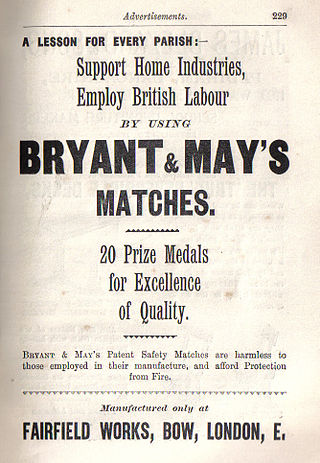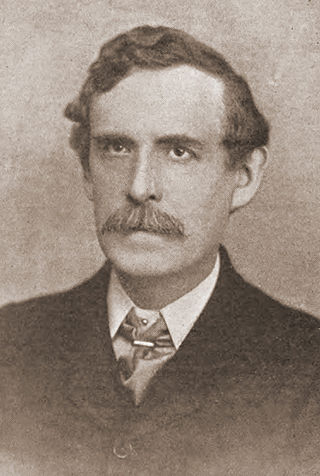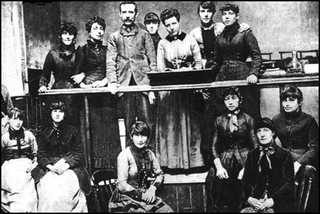
Phosphorus is a chemical element; it has symbol P and atomic number 15. Elemental phosphorus exists in two major forms, white phosphorus and red phosphorus, but because it is highly reactive, phosphorus is never found as a free element on Earth. It has a concentration in the Earth's crust of about one gram per kilogram. In minerals, phosphorus generally occurs as phosphate.

A match is a tool for starting a fire. Typically, matches are made of small wooden sticks or stiff paper. One end is coated with a material that can be ignited by friction generated by striking the match against a suitable surface. Wooden matches are packaged in matchboxes, and paper matches are partially cut into rows and stapled into matchbooks. The coated end of a match, known as the match "head", consists of a bead of active ingredients and binder, often colored for easier inspection. There are two main types of matches: safety matches, which can be struck only against a specially prepared surface, and strike-anywhere matches, for which any suitably frictional surface can be used.

Annie Besant was a British socialist, theosophist, freemason, women's rights and Home Rule activist, educationist, and campaigner for Indian nationalism. She was an ardent supporter of both Irish and Indian self-rule. She became the first female president of the Indian National Congress in 1917.

Phossy jaw, formally known as phosphorus necrosis of the jaw, was an occupational disease affecting those who worked with white phosphorus without proper safeguards. It is also likely to occur as the result of use of chemical weapons that contain white phosphorus. It was most commonly seen in workers in the matchstick industry in the 19th and early 20th centuries. It was caused by white phosphorus vapor, which destroys the bones of the jaw. Modern occupational hygiene practices have since eliminated the working conditions that caused this disease.

The Radium Girls were female factory workers who contracted radiation poisoning from painting radium dials – watch dials and hands with self-luminous paint. The incidents occurred at three factories in the United States: one in Orange, New Jersey, beginning around 1917; one in Ottawa, Illinois, beginning in the early 1920s; and one in Waterbury, Connecticut, also in the 1920s.
An occupational disease or industrial disease is any chronic ailment that occurs as a result of work or occupational activity. It is an aspect of occupational safety and health. An occupational disease is typically identified when it is shown that it is more prevalent in a given body of workers than in the general population, or in other worker populations. The first such disease to be recognised, squamous-cell carcinoma of the scrotum, was identified in chimney sweep boys by Sir Percival Pott in 1775. Occupational hazards that are of a traumatic nature are not considered to be occupational diseases.

Bow Quarter is a gated community in Bow in the London Borough of Tower Hamlets. The building was originally the Bryant and May match factory, and was the site of the Match Girls' strike in the 1880s. The factory was redeveloped in the 1980s, in one of east London's first urban renewal projects.
Albright and Wilson was founded in 1856 as a United Kingdom manufacturer of potassium chlorate and white phosphorus for the match industry. For much of its first 100 years of existence, phosphorus-derived chemicals formed the majority of its products.

Bryant & May was a British match manufacturer, which today only exists as a brand name owned by Swedish Match. The company was formed in the mid-19th century as a dry goods trader, with its first match works, the Bryant & May Factory, located in Bow, London. It later opened other factories in the United Kingdom, Australia, and other parts of the world.

Herbert Burrows was a British socialist activist.
Events from the year 1888 in the United Kingdom. This year is noted for the first Whitechapel murders.

Radium jaw, or radium necrosis, is a historic occupational disease brought on by the ingestion and subsequent absorption of radium into the bones of radium dial painters. It also affected those consuming radium-laden patent medicines.
The Matchgirls is a musical by Bill Owen and Tony Russell about the London matchgirls strike of 1888. It premiered at the Globe Theatre, London, on 1 March 1966, directed and choreographed by Gillian Lynne.
The Berne Convention of 1906 is a multilateral treaty negotiated in Bern, Switzerland, which prohibits the use of white phosphorus in the manufacture of matches. The treaty also prohibits the import and sale of such matches.

Elias Gottlieb Oscar Egede Nissen was a Norwegian physician, newspaper editor and politician. He belonged to the Norwegian Labour Party from 1889 to his death, and was both party leader, party secretary as well as editor of the party organ Social-Demokraten for a period. He also made his mark as a campaigner for temperance and better health conditions. He was also chairman of the Norwegian Santal Mission.
Lewis Lyons was a British trade unionist who led numerous tailors' unions in the United Kingdom.
Gryr i Norden is a Norwegian film from 1939 that was directed by Olav Dalgard. Gryr i Norden is the last film in the "worker trilogy." The other two films are Det drønner gjennom dalen (1938) and Lenkene brytes (1938).

Enola Holmes 2 is a 2022 mystery film and the sequel to the 2020 film Enola Holmes, both of which star Millie Bobby Brown as the title character, the teenage sister of the already-famous Victorian-era detective Sherlock Holmes. The film is directed by Harry Bradbeer from a screenplay by Jack Thorne that adapts the book series The Enola Holmes Mysteries by Nancy Springer. Unlike the film's predecessor, it does not adapt one of Springer's novels and instead takes real-life inspiration from the 1888 matchgirls' strike. In addition to Brown, Henry Cavill, Louis Partridge, Susie Wokoma, Adeel Akhtar, and Helena Bonham Carter reprise their supporting roles, while David Thewlis and Sharon Duncan-Brewster join the cast.

Sarah Chapman was a British trade unionist who was one of the leaders of the 1888 Bryant & May matchgirls' strike. Chapman and others involved in the strike have since been recognised as "pioneers of sex equality and fairness at work who left a lasting legacy on the trade union movement".

The Matchmakers' Union was a British trade union formed in 1888 following the successful Matchgirls' strike. On its creation, it was the largest union of women and girls in the country, and inspired a wave of collective organising among industrial workers.

















